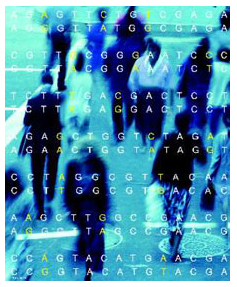Archival Notice
This is an archive page that is no longer being updated. It may contain outdated information and links may no longer function as originally intended.
Home | Glossary | Resources | Help | Contact Us | Course Map
This module deals with calculating the frequency of alleles in relevant human populations. The knowledge of how human populations arise, interact, and develop is central to the understanding of genetics. Alleles are distributed according to the basic rules of Mendelian genetics and are sensitive to natural forces that can be quantitated when populations are studied. This section will introduce the fundamental terms, theories, models, and assumptions and forms the basis for the routine calculations performed on forensic samples. It is assumed that the student is familiar with basic genetics.
Read the Genetics module in course: Crime Scene and DNA Basics for Forensic Analysts.
(You may have to enter your Userid and password.)
Additional Online Courses
- What Every First Responding Officer Should Know About DNA Evidence
- Collecting DNA Evidence at Property Crime Scenes
- DNA – A Prosecutor’s Practice Notebook
- Crime Scene and DNA Basics
- Laboratory Safety Programs
- DNA Amplification
- Population Genetics and Statistics
- Non-STR DNA Markers: SNPs, Y-STRs, LCN and mtDNA
- Firearms Examiner Training
- Forensic DNA Education for Law Enforcement Decisionmakers
- What Every Investigator and Evidence Technician Should Know About DNA Evidence
- Principles of Forensic DNA for Officers of the Court
- Law 101: Legal Guide for the Forensic Expert
- Laboratory Orientation and Testing of Body Fluids and Tissues
- DNA Extraction and Quantitation
- STR Data Analysis and Interpretation
- Communication Skills, Report Writing, and Courtroom Testimony
- Español for Law Enforcement
- Amplified DNA Product Separation for Forensic Analysts


